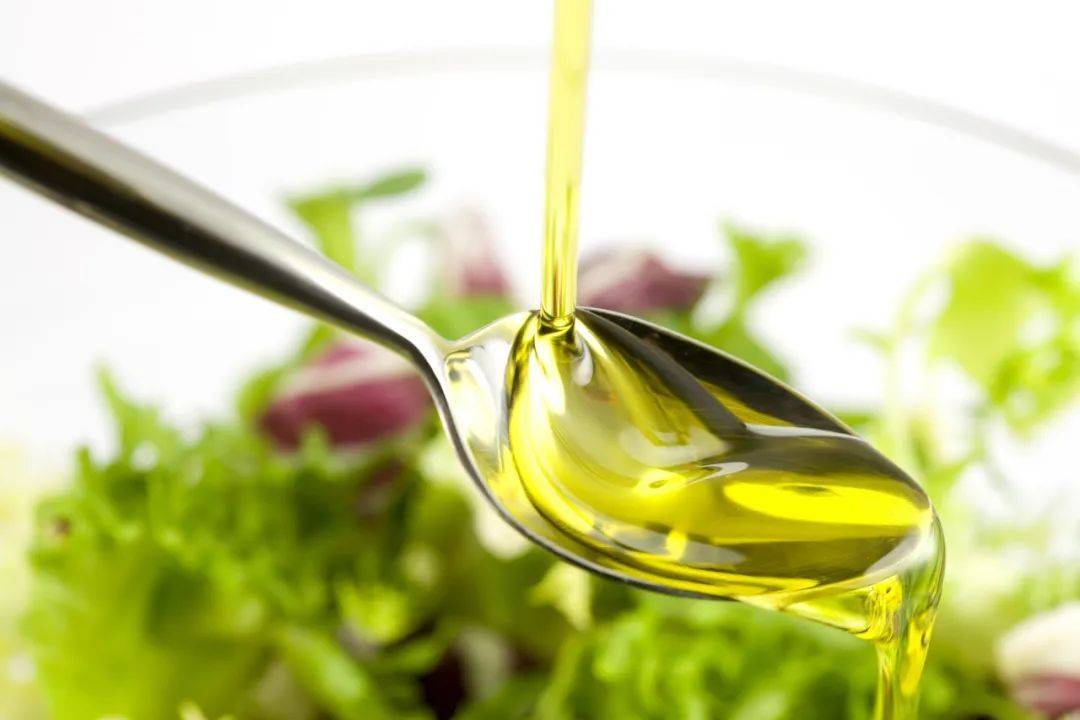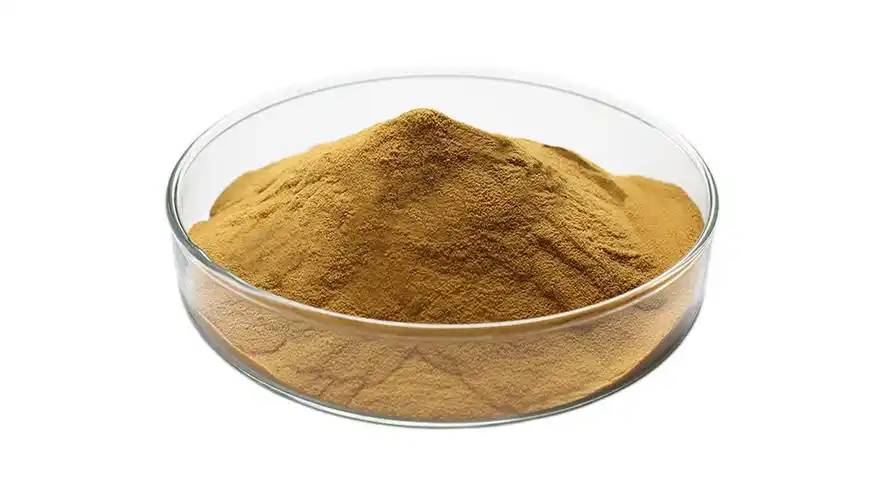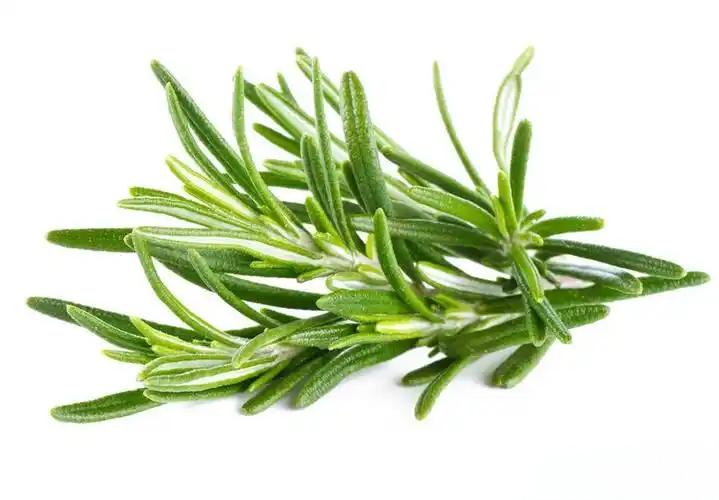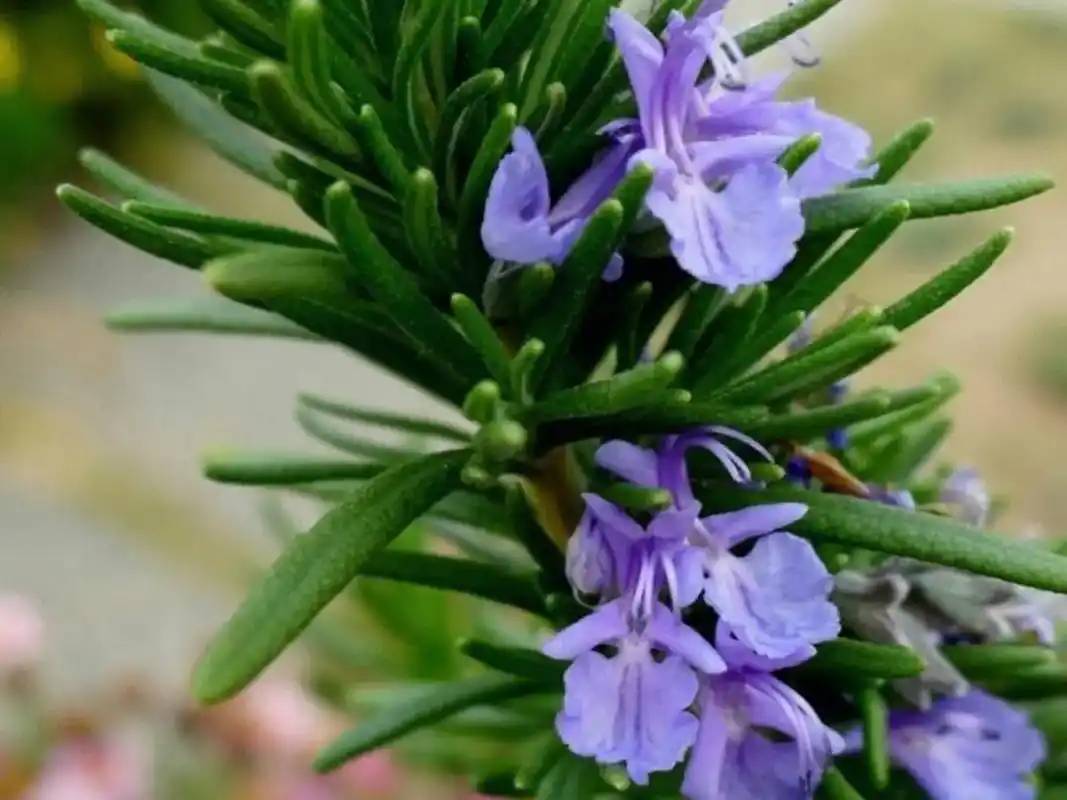What Is the Benefit of Artichoke Extract Active Ingredients?
Artichoke (Cynara scolymus L.) is an ancient dual-purpose medicinal and edible plant from the Mediterranean region[1]. Also known as the vegetable thistle, artichoke, French lily, etc., it is a perennial large herb in the Asteraceae family. It was introduced to Shanghai from France in the 19th century, and is currently cultivated on a large scale in Kunming, Yunnan, Shaoxing, Zhejiang, Changde, Hunan, and other places. Artichokes are highly nutritious, rich in dietary fiber, protein, minerals and other nutrients[2], and are a high-quality health vegetable, known as the “vegetable king”.
For centuries, European and American countries have used artichoke leaf extract to treat gastrointestinal discomfort, lower cholesterol and protect the liver[3]. In recent years, research on the active ingredients in artichoke extract and their pharmacological mechanisms has gradually attracted attention. Studies have shown that artichoke contains active ingredients such as polyphenols, flavonoids, and terpenes, which have antioxidant, hypolipidemic, anti-inflammatory, and anti-cancer cell proliferation effects, as well as protective and regulatory effects on the digestive and cardiovascular systems.
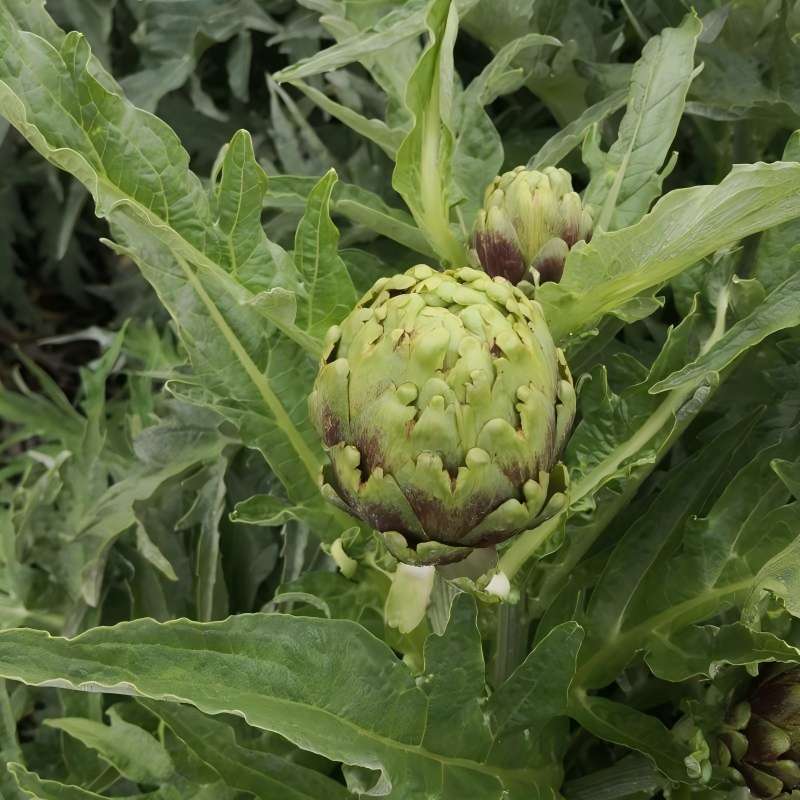
Artichoke is not listed as a traditional Chinese medicine in China. Zhao Yimeng et al. [4] combined traditional Chinese medicine theory to analyze and promote the “traditional Chinese medicine” of artichoke, and believe that artichoke can promote digestion, regulate the stomach, clear dampness and heat, and reduce blood fat. It is mainly used for indigestion, loss of appetite, nausea, abdominal distension, hypochondriac pain, jaundice, hyperlipidemia, etc. At present, China's artichoke industry has reached a large scale, but the use of artichokes is limited to the primary processing of agricultural products, and the use of its medicinal value has yet to be developed. A comprehensive review of the current research and development of the active ingredients and pharmacological activities of artichokes is provided with the aim of promoting the comprehensive utilization of artichokes and providing a reference for in-depth clinical research.
1 Research on the active ingredients of artichoke extracts
Artichoke is a vegetable with high nutritional value, rich in functional ingredients such as polyphenols, flavonoids and terpenes. Research has found that the chemical composition of different parts of artichoke is the same, but the content varies significantly. The total crude protein and amino acid content in the edible flower buds and bracts is much higher than in the inedible bracts [5]. Bao Feng et al. [6] found that the total flavonoid and total polyphenol content in artichoke leaves was 2.65 and 2.97 times that of leaf stalks, and 2.00 and 2.13 times that of flower buds, respectively, through a comparative study of the composition of different parts of artichokes.
Polyphenols are a class of compounds with a phenolic structure, with one or more phenols as the basic backbone structure, and a structural feature of polyhydroxy substitution. They are widely found in plants and have biological activities such as anti-oxidation, anti-cardiovascular disease, anti-tumor and anti-virus[7]. Artichoke leaves, stems and buds are rich in polyphenols, including caffeoylquinic acids and their derivatives, and flavonoids, of which chlorogenic acid (3-caffeoylquinic acid) and artichoke (1,3-dicaffeoylquinic acid) have the highest content.
Katrin Schitz et al. [8-9] used high performance liquid chromatography-diode array-electrospray ionization tandem mass spectrometry (HPLC-DAD-ESI/MSn) to qualitatively analyze extracts from different parts of the artichoke. 11 caffeoylquinic acids and their derivatives, 8 flavonoids and 13 anthocyanins, among which chlorogenic acid (3-caffeoylquinic acid), artichoke (1,3-dicaffeoylquinic acid), 1,5-dicaffeoylquinic acid, apigenin-7-glucoside and cornflower-3-(6-malonyl) glucoside. Meilian Yang et al. [10] used ultra-high performance liquid chromatography-tandem mass spectrometry (UHPLC-MS/MS) to qualitatively and quantitatively analyze the polyphenolic components in different extracts of artichoke inflorescences. combining standards, literature and mass spectrometry databases, a total of 27 polyphenolic components were identified, including 9 caffeic acid derivatives and 10 flavonoids. Seven components were even reported for the first time in artichoke-related research. Quantitative analysis showed that the main polyphenolic components in artichoke inflorescences are 1,3-dicaffeoylquinic acid, 1,5-dicaffeoylquinic acid, 3,4-dicaffeoylquinic acid, apigenin and cynarasaponin A/H.
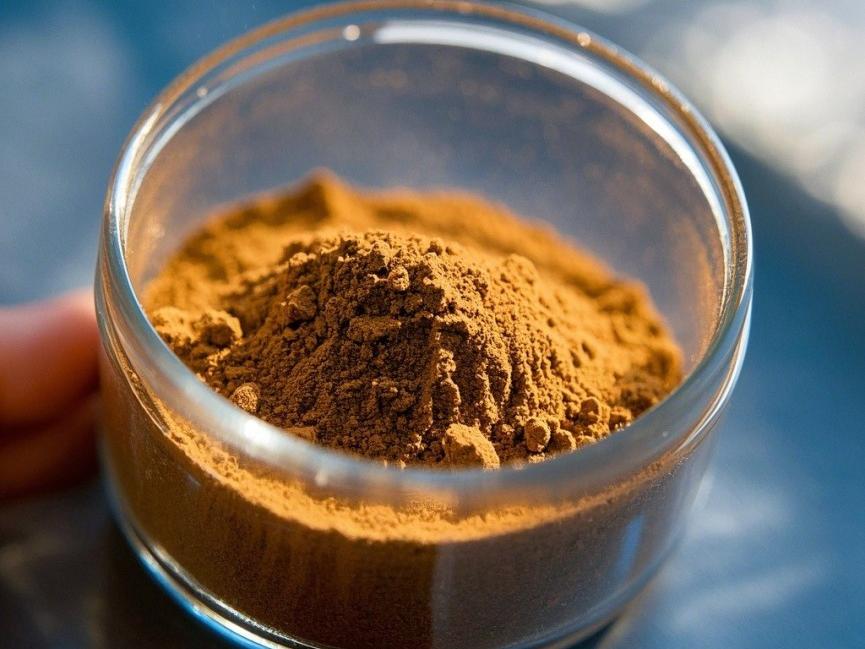
Terpenoids, also known as isoprenyl compounds, are a class of compounds and their derivatives that consist of two or more isoprene units linked head-to-head or tail-to-tail. The terpenoids in artichokes are mainly composed of artichoke bitter substances and guaiolane-type sesquiterpene lactones, which have biological activities such as antispasmodic and anti-inflammatory effects in living organisms. Hiroshi Shimoda et al. [11] isolated six terpene compounds from different extracts of artichoke leaves, including three new terpene glycosides cynaracoloside A, B, and C from the n-butanol extract.
Xiaoli Li et al. [12] obtained 9 guaiol-type sesquiterpene lactones from artichoke, among which cynarinin A and cynarinin B are new sesquiterpenoids. Studies have isolated sesquiterpene lactone compounds from the ethyl acetate extract of artichoke leaves, one of which is the newly discovered 3β,8α,11α,13-tetrahydroxy-10(14)-guaiadien-1α,4β,5α,6β-hydro-6α,12-lactone. Shi Mingyue [13] obtained 8 compounds by the separation and identification of the ethanol extract of Artemisia japonica, of which 6 were guaiol-type sesquiterpene lactones, and a new compound: azuleno[4,5-b]furan-2(3H)-one, 3-(chloromethyl)decahydro-3,8-dihydroxy-9-methyl-6-methylene-, (3S,3aR,6aR,8S,9S,9aR,9bR).
2 Pharmacological activity of artichoke
2.1 Antioxidant effect
Artichoke extract has strong antioxidant capacity, like vitamin C, vitamin E, N,N-diphenyl-p-phenylenediamine, hydroxybenzoic acid and flavonoids [14-15]. It can remove free radicals, inhibit oxidative stress response and oxidation of low-density lipoprotein. Its antioxidant capacity mainly comes from polyphenolic compounds such as chlorogenic acid, artichoke and flavonoids in artichoke. The difference in composition and concentration of different parts of the artichoke is correlated with the difference in oxidation capacity.
Lisard Iglesias-Carres et al. [16] used 2,2-Diphenyl-1-picrylhydrazyl (DPPH) radical scavenging capacity determination, 2,2′-Azino-bis (3-ethylbenzothiazoline-6-sulphonic acid) (ABTS) radical scavenging and the ability to reduce ferric ions (Ferric ion reducing antioxidant power, FRAP) 3 different methods comprehensively evaluate the antioxidant capacity of different varieties of artichoke. The results show that different varieties of artichoke all have significant antioxidant capacity, but the antioxidant capacity of the two varieties of artichoke differs by 56.6% to 97.3%. which is likely related to the content of caffeic acid, 3,5-dicaffeoylquinic acid and 1,5-dicaffeoylquinic acid in the two varieties of artichoke. This is consistent with the results of many studies on the antioxidant capacity of artichoke, which varies among different varieties and during the growth cycle of the plant [17]. Similarly, artichoke leaves, flower buds, bracts, flower buds and roots have strong antioxidant properties, and their antioxidant activity is directly proportional to the amount of polyphenols they contain [2].
Antonella Garbetta et al. [18] used the DCFH-DA (2′,7′-dichlorodihydrorofluorescein diacetate) probe to test the antioxidant capacity of artichoke extract and its main monomeric polyphenols on the human intestinal cell line HT-29. They found that chlorogenic acid and 1,5-dicaffeoylquinic acid are the main components of the antioxidant capacity of artichoke, and the antioxidant capacity of artichoke extract is higher than that of the monomeric polyphenols. The antioxidant capacity of monomeric polyphenols varies in different studies. Some studies have found that the antioxidant capacity of artichokein is higher than that of chlorogenic acid and 1-caffeoylquinic acid by measuring the DPPH free radical scavenging capacity of purified artichoke compounds.
Oxidative stress is an imbalance between local reactive oxygen species (mainly superoxide anions, hydrogen peroxide, and hydroxyl radicals) and the antioxidant mechanism. When an organism is under oxidative stress, it produces too many free radicals that cannot be removed by its own antioxidant system, damaging tissue cells such as white blood cells and endothelial cells. The polyphenolic compounds in different extracts of artichoke can protect tissue cells by inhibiting oxidative stress and exert their antioxidant activity. Ban et al. [19] used the DCFH-DA probe to detect the level of reactive oxygen species in nerve cells and found that artichoke lipid-soluble extract can significantly inhibit the production of reactive oxygen species in nerve cells, thereby reducing oxidative stress cell damage caused by reactive oxygen species and protecting nerve cells.
2.2 Effects on the digestive system
In Europe, artichoke leaf extract is a traditional folk remedy for indigestion and liver protection. In clinical trials, artichoke extract can significantly improve the symptoms of functional dyspepsia without any side effects by promoting bile secretion, in which bile acids can stimulate glucagon-like peptide-1 in the colon, enhance insulin secretion, carbohydrate and fat metabolism [20]. In clinical studies, a significant increase in bile flow was observed after acute treatment with artichoke leaf extract and after repeated administration. In vitro tests showed that artichoke leaf extract can increase liver perfusion in rats and bile secretion in cultured liver cells. A study at the University of Reading in the UK showed that 208 adults with irritable bowel syndrome and dyspepsia who received a 2-month intervention with artichoke leaf extract had a 26.4% reduction in the incidence of bowel syndrome at the end of the trial. There was a significant change in the patients' self-reported bowel movement patterns, with repeated constipation and diarrhea tending to normalize. After treatment, symptoms of indigestion decreased by 41%. Overall, the researchers found that the participants' quality of life improved by 20% after treatment [21].
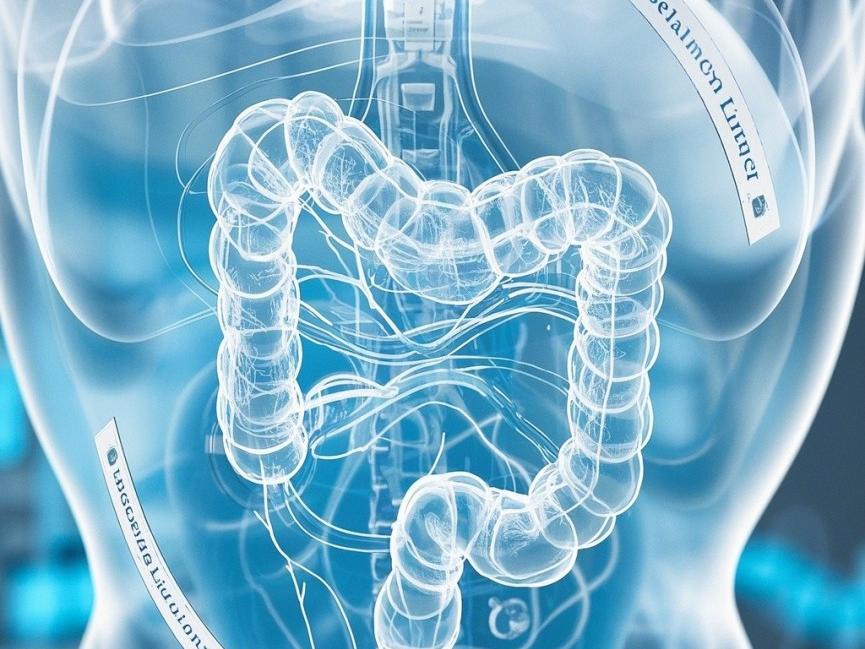
2.3 Effect on the cardiovascular system
High cholesterol levels can increase the risk of coronary heart disease and atherosclerosis. Since the 1970s, scientists have been studying the effect of artichoke on cholesterol. It has been proven that artichoke leaf extract can regulate lipid metabolism in the human body by inhibiting the biosynthesis of cholesterol and endogenous triglycerides. Among them, the role of artichoke extract is particularly important. Researchers have found that 2-3 g/d of artichoke leaf extract can reduce the mass concentration of low-density lipoprotein by 8-49 mg/dL, total cholesterol by 12-55 mg/dL, and triglycerides by 11-51 mg/dL. Luteolin and chlorogenic acid may play a key role in the regulation of blood lipids by artichoke leaf extract. Artichoke may provide a good nutritional way to reduce the formation of trimethylamine, a pro-atherosclerotic substance caused by choline, and ultimately provide cardioprotective effects in the elderly by inhibiting the formation of oxidized trimethylamine [16].
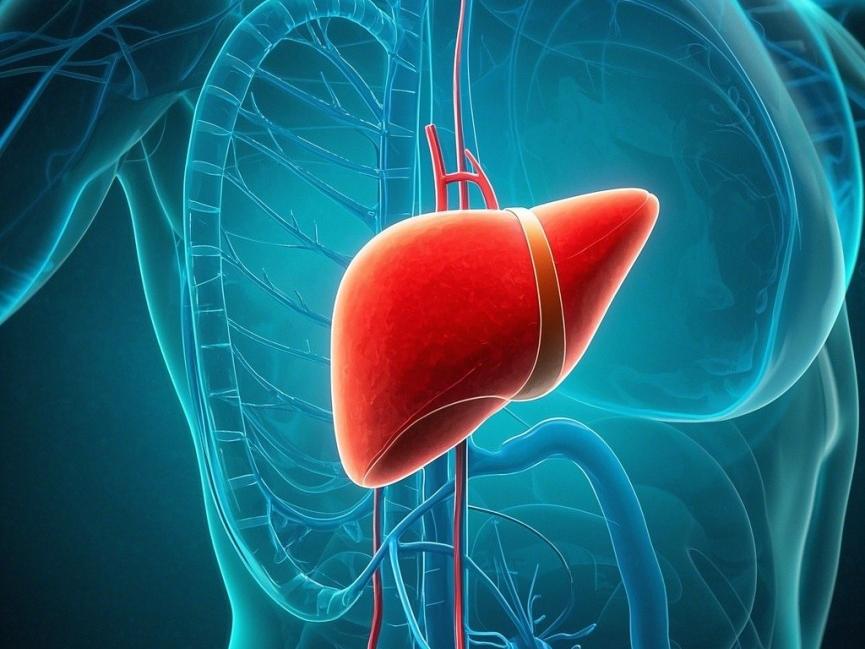
2.4 Effect on microorganisms
Artichoke extracts in different polar solvents all exhibit inhibitory effects on bacteria, yeasts and molds. The main antibacterial components are polyphenolic compounds such as chlorogenic acid and artichokein. Xianfeng Zhu et al. [22] found that the butanol extract of artichoke exhibited strong antibacterial activity against bacillus, yeast and mold. Magdy A Shallan et al. [23] showed that the minimum antibacterial quality concentration of the ethanol extract of artichoke flower bracts and buds against seven foodborne bacteria was 0.08-0.77 mg/mL, and the minimum antibacterial quality concentration for 8 mycotoxin-producing fungi is 0.87~4.16 mg/mL. The minimum antibacterial concentration of the artichoke flower bud ethanol extract against different bacteria and fungi is generally lower than that of the flower bud ethanol extract, which is consistent with the content of polyphenols in the bracts and flower buds. The inhibitory effect of methanol extract of Artichoke leaves on different bacteria is different, and the antibacterial effect of purified polyphenols is significantly enhanced [24].
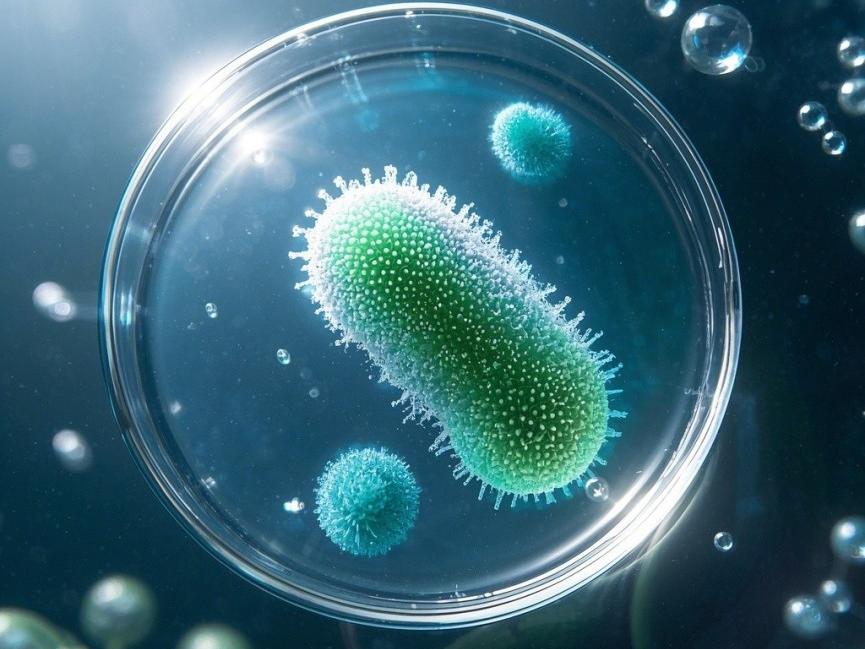
2.5 Antitumor activity
Artichoke is rich in vitamin C and polyphenolic compounds with antioxidant activity. These compounds can reduce diseases related to oxidative stress. Studies have shown that artichoke extract can prevent and improve breast cancer, colon cancer, liver cancer, leukemia and melanoma. Annette M Mathew et al. [25] found that artichoke extract can inhibit the proliferation of human malignant melanoma cells (HTB-72) and promote apoptosis. The mechanism of action may be through upregulating the expression of cell cycle regulatory proteins P21 and P27 and downregulating the expression of cyclin-dependent kinase 4 and the apoptosis inhibitor protein survivin. Treatment of liver cancer HePG2 cells and breast cancer MCF7 and HCT116 cells with ethanol extracts of artichoke flower buds and buds showed that both extracts inhibited liver cancer HePG2 cells and breast cancer MCF7 cells, with the bud extract being more potent than the bud extract, while both had no inhibitory effect on breast cancer HCT116 cells [23].
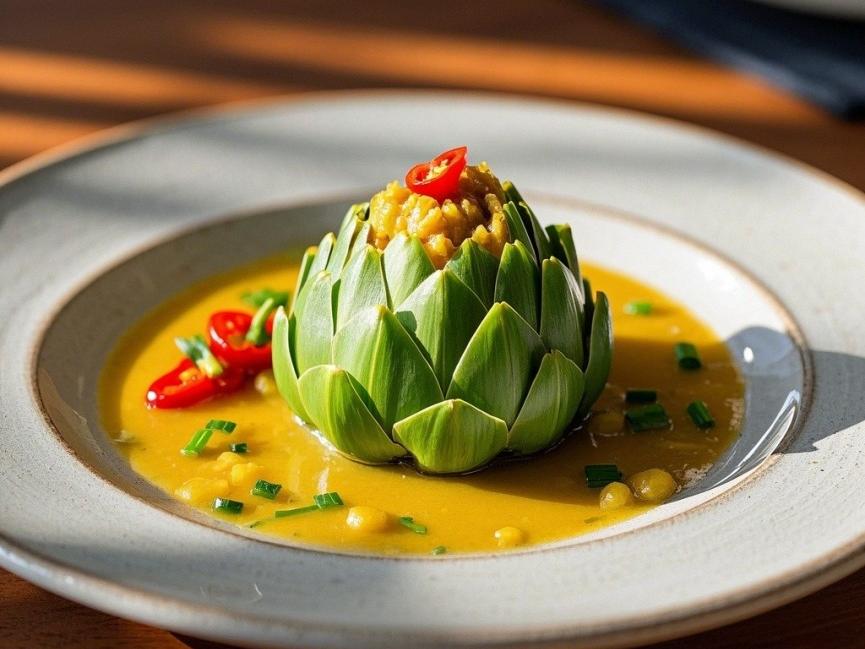
3 Conclusion
In European and American countries, artichokes have long been used as both medicine and food. The buds are eaten as vegetables, and the leaf extract is used as a medicine to treat indigestion and protect the liver. Modern pharmacological studies have shown that the polyphenols, flavonoids and terpene compounds contained in artichokes have diverse pharmacological activities and are effective in antioxidant, digestive and lipid-lowering actions. However, in China, only artichoke buds are used as fresh vegetables, and by-products such as canned artichokes, liver protection health products, dietary fiber biscuits, and drinks have been developed. The medicinal value of the active ingredients in artichoke leaves and stalks has not been fully utilized. Currently, in order to realize the “traditional Chinese medicine” of artichoke as soon as possible, give full play to its medicinal value, expand the sources of traditional Chinese medicine, and promote the comprehensive utilization of artichoke in China, further in-depth research is needed on the active mechanism of artichoke extract, the collaborative mechanism between the various components, and animal experiments and clinical studies.
Reference
[1]Alina-Ioana Gostin ,Viduranga Y. Waisundara. Edible flo- wers as functional food: A review on artichoke( Cynara cardunculus L.) [J] . Trends in Food Science & Technolo- gy ,2019(86):381-391.
[2]Abeer M. El Sayed ,Rasha Hussein ,Amira Abdel Motaal, et al. Artichoke edible parts are hepatoprotective as com- mercial leaf preparation [J] . Revista Brasileira de Farmacognosia ,2018 ,28(2): 165-178.
[3]K. Kraft. Artichoke leaf extract—recent findings reflecting effects on lipid metabolism ,liver and gastrointestinal trac- ts [J] . Phytomedicine , 1997(4):369-378.
[4] Zhao Yimeng, Wang Chendi, Zhang Rui, et al. A study of the literature on the exotic medicinal plant artichoke and an exploration of its theory of “traditional Chinese medicine” [J]. Chinese Journal of Traditional Chinese Medicine, 2020, 45(14): 3481-3488.
[5] Song Shuhui, He Hongju, Wu Xingde, et al. Analysis of the nutritional composition of artichoke [J]. Journal of Nutrition, 2006 (3): 273-274.
[6] Bao Feng, Yuan Huizhen, Lin Xiao, et al. Comparative study of different parts of artichoke based on the correlation between “ingredients-antioxidant” [J]. Grain and Oil , 2022 , 35 (2): 142-145.
[7] Liu Xinhao, Wei Fenju, Wang Xueshun, et al. Research progress on the biological activity of polyphenolic compounds [J]. Chinese Journal of Pharmaceutical Industry, 2021, 52 (4): 471-483.
[8]Katrin Schütz ,Dietmar Kammerer ,Reinhold Carle ,et al. Identification and quantification of caffeoylquinic acids and flavonoids from artichoke( Cynara scolymus L.) heads, juice ,and pomace by HPLC-DAD-ESI/MSn [J] . Journal of Agricultural and Food Chemistry ,2004 ,52(13): 4 090-4 096.
[9]Katrin Schitz , Markus Persike , Reinhold Carle , et al. Characterization and quantification of anthocyanins in se- lected artichoke(Cynara scolymus L.) cultivars by HPLC DAD ESI MSn [ J] . Analytical and Bioanalytical Chem- istry ,2006(38): 1 511-1 517.
[10]Meilian Yang ,Yanli Ma ,Zengyuan Wang ,et al. Phenolic constituents ,antioxidant and cytoprotective activities of cr- ude extract and fractions from cultivated artichoke inflores- cence [ J] . Industrial Crops and Products , 2020(14): 111 433-111 439.
[11]Hiroshi Shimoda , Kiyofumi Ninomiya , Norihisa Nishida, et al. Anti-hyperlipidemic sesquiterpenes and new sesquit- erpene glycosides from the leaves of artichoke(Cynara sc- olymus L.):Structure requirement and mode of action [J] . Bioorganic & Medicinal Chemistry Letters ,2003 , 13(2): 223-228.
[12]Xiaoli Li , Pingli Qian , Zeyuan Liu , et al. Sesquiter- penoids from Cynara scolymus [J] . Heterocycles , 2005,65(2):287-291.
[13] Shi Mingyue. Separation, purification and structural identification of artemisinin alcohol extract [D]. Changsha: Central South University of Forestry and Technology, 2019.
[14] Antonio Jiménez-Escrig ,Lars Ove Dragsted ,Bahram Da- neshvar ,et al. In vitro antioxidant activities of edible arti- choke(Cynara scolymus L.) and effect on biomarkers of antioxidants in rats [ J] . Journal of Agricultural and Food Chemistry ,2003 ,51(18):5 540-5 545.
[15]Stefania Miccadei , Donato Di Venere , Angela Cardinali, et al. Antioxidative and apoptotic properties of polyphenolic extracts from edible part of artichoke(Cynara scolymus L.) on cultured rat hepatocytes and on human hepatoma cel - ls [J] . Nutrition and Cancer ,2008 ,60(2):276-283.
[16]Lisard Iglesias -Carres , Angelica Bruno , Isabella D'An- tuono , et al. In vitro evidences of the globe artichoke an- tioxidant ,cardioprotective and neuroprotective effects [J] . Journal of Functional Foods , 2023( 17): 105 674 - 105 681.
[17]Youssef Rouphael,Jamila Bernardi ,Mariateresa Cardarelli, et al. Phenolic compounds and sesquiterpene lactones profile in leaves of nineteen artichoke cultivars [J] . Journal of Agri- cultural and Food Chemistry , 2016 , 64(45): 8 540 - 8 548.
[18]Antonella Garbetta , Imperatrice Capotorto , Angela Cardi- nali , et al. Antioxidant activity induced by main polyphe- nols present in edible artichoke heads :Influence of in vitro gastro-intestinal digestion [J] . Journal of Functional Foods ,2014(10):456-464.
[19] Ban L, Wang X, Pang S, et al. Protective effect of a fat-soluble extract from artichoke stems and leaves on nerve cells [J]. Chinese Journal of Food Science, 2021, 21(5): 31-40.
[20]Gerald H. Tomkin , Daphne Owens. Obesity diabetes and the role of bile acids in metabolism [J] . Journal of Transla- tional Internal Medicine ,2016(2):73-80.
[21]Rafe Bundy , Ann F. Walker , Richard W. Middleton , et al. Artichoke leaf extract reduces symptoms of irritable bow- el syndrome and improves quality of life in otherwise heal- thy volunteers suffering from concomitant dyspepsia :A subset analysis [J] . Journal of Alternative & Complementary Medicine ,2004(4):667-669.
[22]Xianfeng Zhu , Hongxun Zhang , Raymond Lo. Phenolic compounds from the leaf extract of artichoke(Cynara sco- lymus L.) and their antimicrobial activities [J] . Journal of Agricultural and Food Chemistry ,2004 ,52(24):7 272- 7 278.
[23]Magdy A Shallan ,Mohamed A. Ali ,Walaa A. Meshrf ,et al. In vitro antimicrobial ,antioxidant and anticancer activi- ties of globe artichoke(Cynara cardunculus var. scolymus L.) bracts and receptacles ethanolic extract [J] . Biocataly- sis and Agricultural Biotechnology ,2020(29): 101 774- 101 782.
[24] Yang Kexia. Chemical composition and activity research of artichoke [D]. Kunming: Kunming University of Science and Technology, 2016.
[25]Annette M Mathew ,Zuliang Deng ,Christian J. Nelson ,et al. Artichoke as a melanoma growth inhibitor [J] . Medical Oncology ,2023 ,40(9):262-274.


 English
English French
French Spanish
Spanish Russian
Russian Korean
Korean Japanese
Japanese